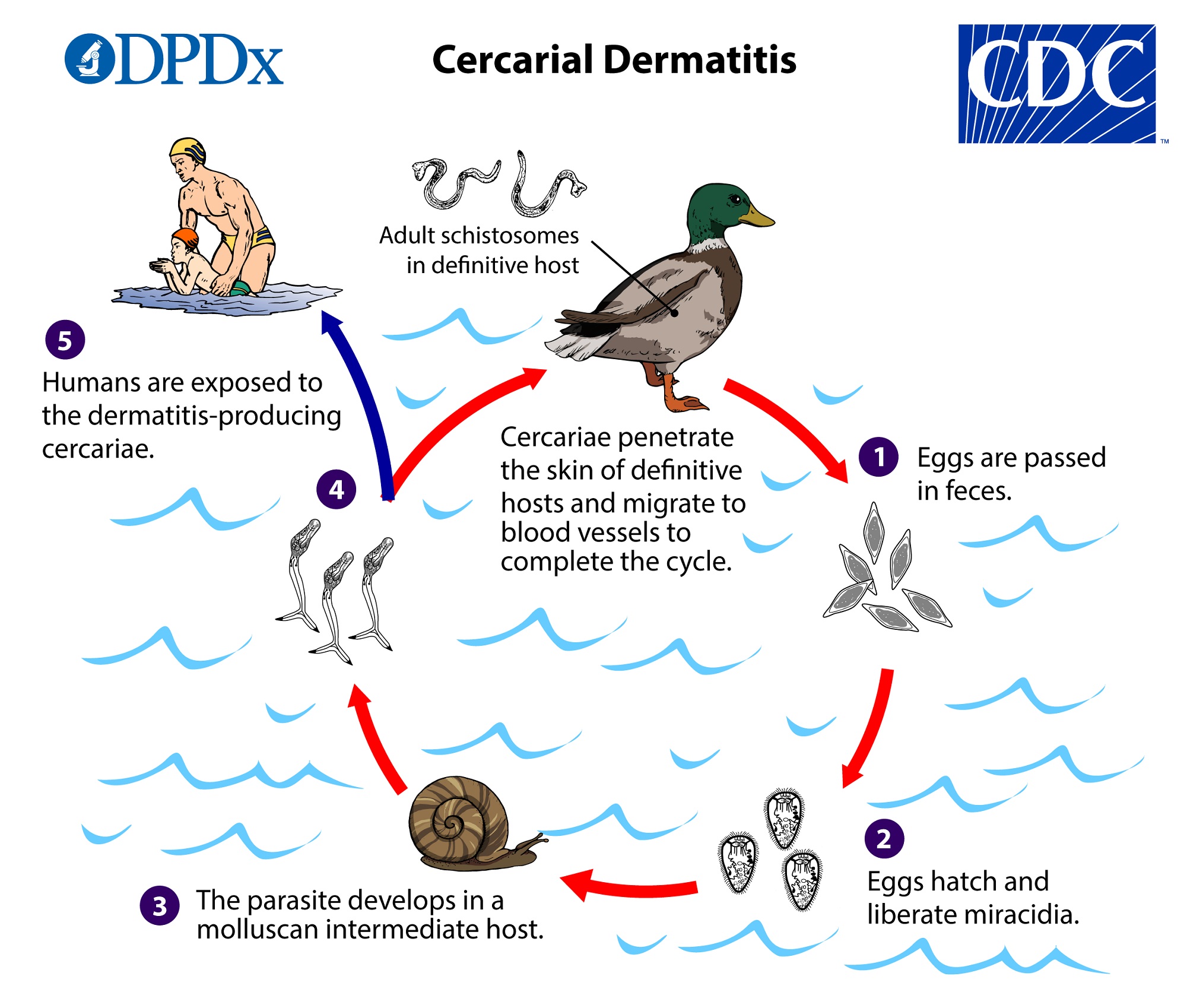Swimmer’s Itch (Cercarial Dermatitis)
Swimmer's itch is a skin rash caused by a parasite (schistosomes) that is released from infected snails into shallow water. Once released, the parasites can penetrate the skin of people in the water.

A visual of the life cycle is shown below: Life cycle image courtesy of CDC - Cercarial Dermatitis - Biology
Transmission
While all age groups are at risk, children are most often infected due to:
- Swimming or wading in contaminated water, followed by:
- Not promptly toweling off
Only about one-third of people who are exposed to the parasite develop swimmer's itch.
Symptoms
Symptoms may appear within one to two hours of exposure and may include:
- Tingling sensation as the parasite digs into the skin
- Small reddish pimples or blisters may appear within 12 hours
- Itching may last up to a week or more but will gradually go away
A person's first exposure to infested water may not result in an itchy rash. Repeated exposure increases a person's allergic sensitivity to the parasite and increases the likelihood of rash development.
Diagnosis
Most cases of swimmer’s itch do not require medical attention. Laboratory tests are available to diagnose swimmer’s itch if needed.
Treatment
Swimmer’s itch does not have a specific medical treatment. If you have a rash, you may try the following for relief:
- Use corticosteroid cream
- Apply cool compresses to the affected areas
- Bathe in Epsom salts or baking soda
- Soak in colloidal oatmeal baths
- Apply baking soda paste to the rash (made by stirring water into baking soda until it reaches a pastelike consistency)
- Use an anti-itch lotion
Try not to scratch, as scratching may cause the rash to become infected. If itching is severe, your health care provider may suggest prescription-strength lotions or creams to lessen your symptoms. For more information about the treatment of swimmer’s itch contact your health care provider or visit CDC - Cercarial Dermatitis.
Prevention
To reduce the likelihood of developing swimmer’s itch:
- Do not swim in areas where swimmer’s itch is a known problem.
- Do not swim near or wade in marshy areas where snails are commonly found.
- Briskly towel dry or shower immediately after leaving the water.
- Do not attract birds (e.g., feeding them) to areas where people are swimming.
- Encourage health officials to post signs on shorelines where swimmer’s itch is a current problem.
Exclusion Guidance
Individuals with swimmer's itch should not be excluded from work, school, or child care unless the general exclusions apply.
